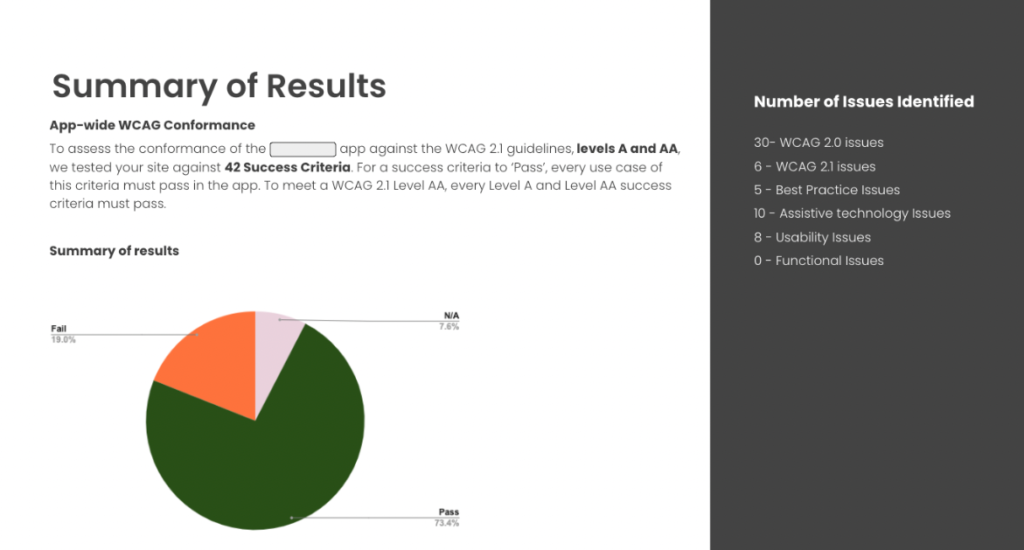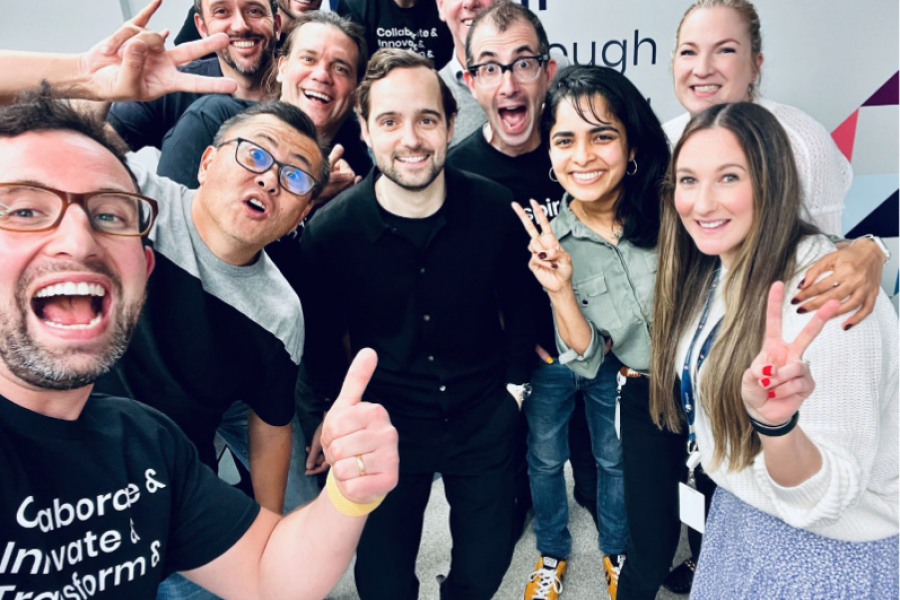- people using mobile phones, smart watches and other devices with small screens, different input modes, etc.
- older people with changing abilities due to ageing
- people with “temporary disabilities” such as a broken arm or lost glasses
- people with “situational limitations” such as in bright sunlight or in an environment where they cannot listen to audio
- people using a slow internet connection, or who have limited or expensive bandwidth
A great resource for exploring this further is this Inclusive Design Toolkit from Microsoft.
As a business, we’re taking meaningful action on accessibility on two fronts.
For our team, our goal as a company is to be a workplace that allows easy access for people with disabilities and that adjustments are made where necessary to allow people to do their best work. This entails a lot of ongoing listening and learning, and creating an environment where people are safe to communicate what they need to do their work. Our diversity and inclusion working group are leading the charge on this.
For our clients, we continually provide accessibility as part of our suite of services, building capacity and understanding about the importance and benefit of being accessible. This may take the form of an Accessibility Audit, Usability Testing with people with disabilities or our Empathy Lab.
An Accessibility Audit is a thorough evaluation of the accessibility of a digital product, according to global standards and guidelines. It involves our consultants examining and testing the user interface, navigating through the product using assistive technologies and conducting usability tests with a variety of users.
In order to be able to undertake an Accessibility Audit, first you need to have an existing product (website or app); and understanding of your target customers, their motivations and tasks; and access to the code base.
So why do an Accessibility Audit? Some of the proven benefits include:
- Increase conversion by understanding which areas of the product require redesign or redevelopment
- Increase retention by improving the experience and accessibility, supporting return visits and positive recommendations
- Increase revenue by including all members of the community as potential users and customers
- Mitigating risk – Australia’s Disability Discrimination Act of 1992 requires that Australian companies with digital products or companies that maintain publicly accessible products on Australian servers must not treat people with disabilities less favourably than those without disabilities.
Transpire has developed an approach to accessibility auditing digital products, stemming from our experience working in agile teams and to a development cycle. Our method enables a prioritised list of recommendations based on quick wins and severe issues. An example from a report is below.
All of our audits and testing assess conformance with Web Content Accessibility Guidelines (WCAG). On a recent project, our client had a mandate that all new products and services must meet a minimum WCAG 2.1 accessibility grade, and a pathway to increase that to level AA.
To ensure the team met these requirements, a dedicated accessibility consultant was put on the project who met with the project team twice a week, helping with design reviews and supporting the development team to meet the accessibility requirements.
In all usability testing sessions we included people who identified as having disability as well as people who identify as culturally and linguistically diverse.
One of our UX team who worked on this project said that: “The biggest learning here is if you don’t ask the question in your research screener, you won’t know … People with disabilities are your users.”
In recognising the impact we had, the client noted: “The team are talented, genuine and have added enormous value — particularly leading the way with accessibility.”
Accessibility is not a new concept but as our lives move more and more online, and digital experiences become more ubiquitous and indispensable, it’s never been more important for creators to ensure everything they create is accessible to all.
We understand that it can be intimidating and overwhelming to look at this for the first time, but as well as meeting your obligations to the 20% of Australians who identify as having a disability – it will make your organisation better.
As Maya Angelou said: “Do the best you can until you know better. Then when you know better, do better.”








